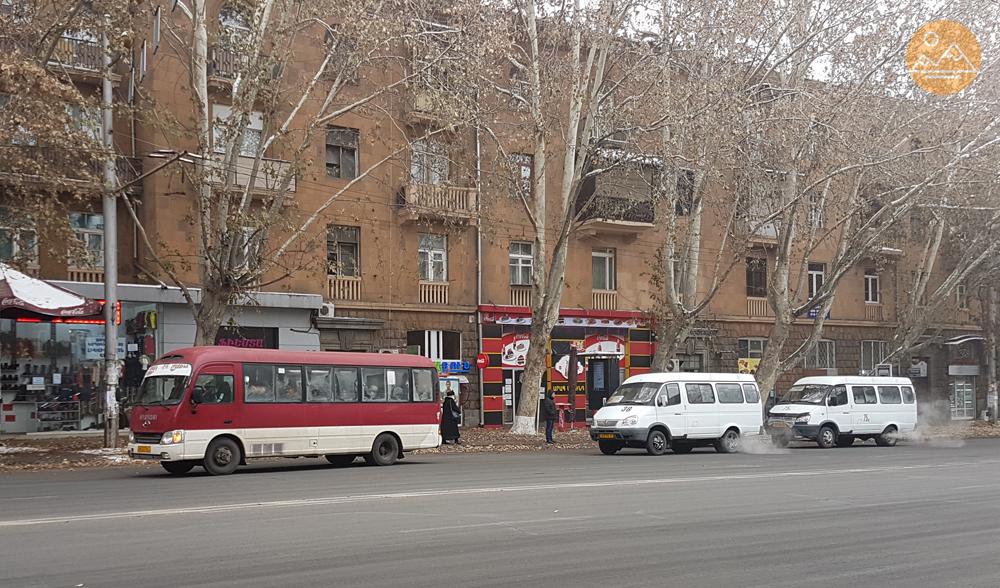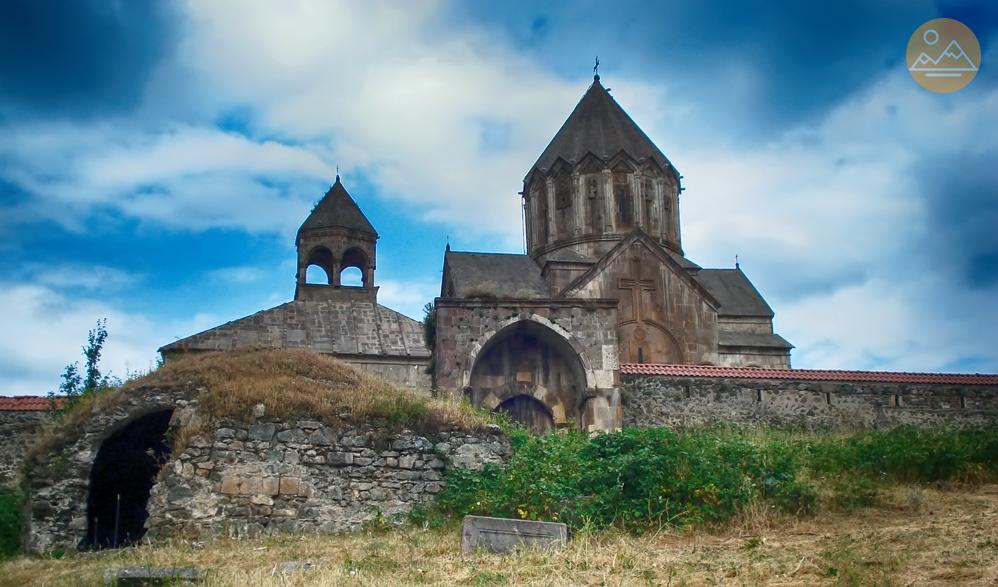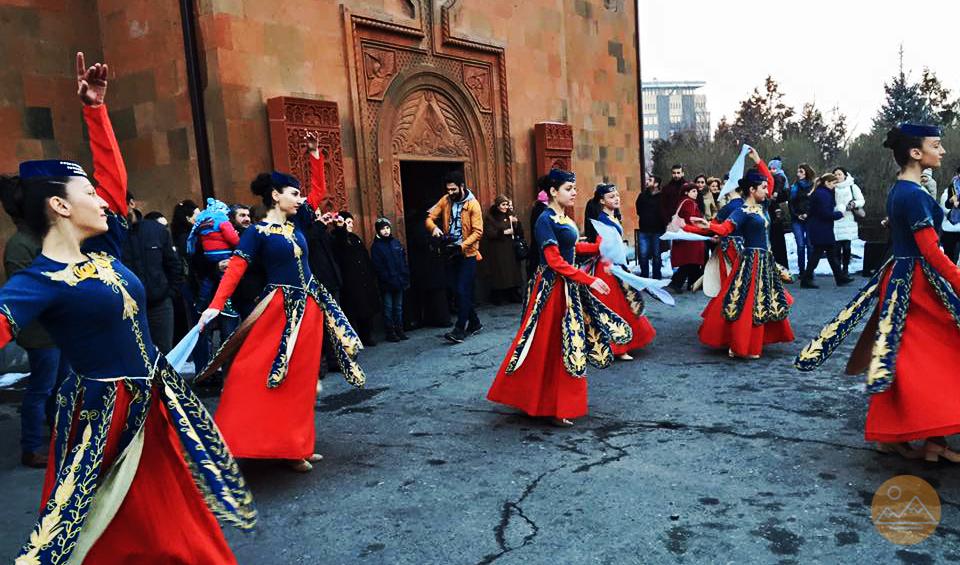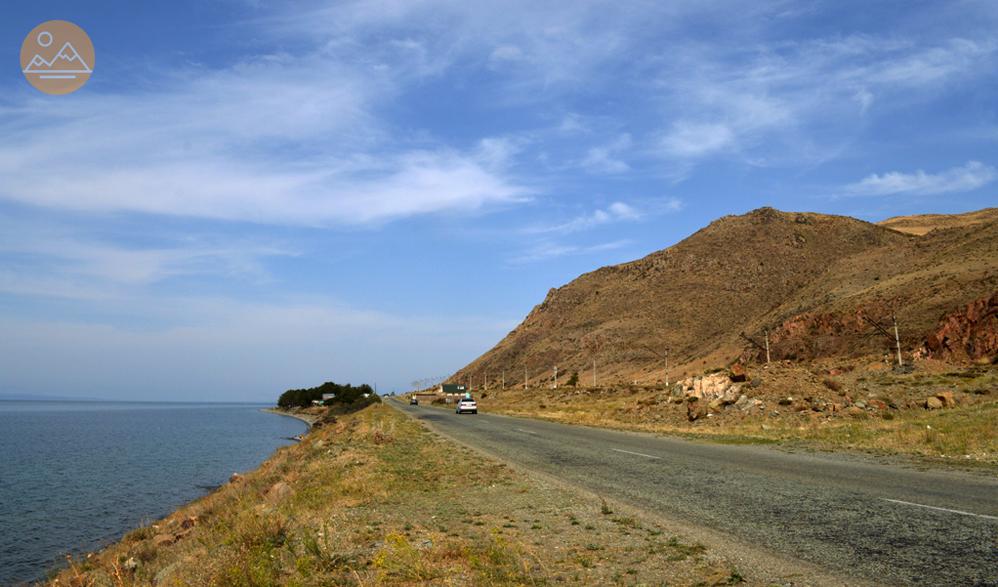-
 Nane Khachatryan
Nane Khachatryan
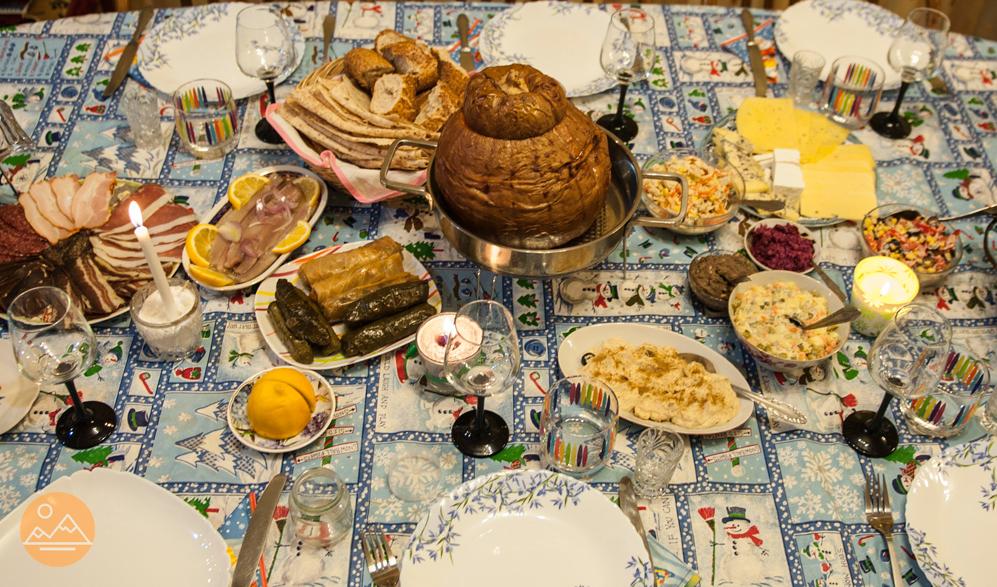
Christmas dinner in Armenia / Photo: Nane Khachatryan
New Year in Armenia: A Festive Dinner
Views - 4164
As any other tradition describing a particular country, food culture is also a part of its historical and national context. The development process of each national cuisine has its social, geographical as well as religious conditions. Armenian culture historically was bound with certain beliefs, especially from 4th century, when Armenia officially adopted Christianity as a state religion. And Armenian holiday dishes began to correspond to respective rules originating from ecclesiastical order. The New Year table can be the best example for understanding traditional and modern tendencies of Armenian festive hospitality. Unlike other Christian churches, Armenian Apostolic church celebrates Christmas on January 6, and earlier on December 31 Armenians celebrate New Year. The latter became common within Armenians in the end of 19th century and especially after 1920’s, with the establishment of the Soviet rule in Armenia. As a result, New Year and Christmas celebrations kept only the old practice, but lost their religious significance.
These social-political conditions also affected the traditional holiday food habits. In medieval times, ordinary people, peasants used to fetch their daily bread through a hard work in fields and orchards. The Armenian Highlands were home to vast wheat, barley, groats, millet and other grain fields. Thus, the Armenian festive tables traditionally were the reflection of the rural life of the farmers. On the other hand, religious families (whose number was dominant in older times) had to fast from the last day of December until the evening of January 5th. Therefore, still in 19th century, Armenian Amanor (New Year) table was filled with mainly vegetarian/vegan grain dishes and sweets.
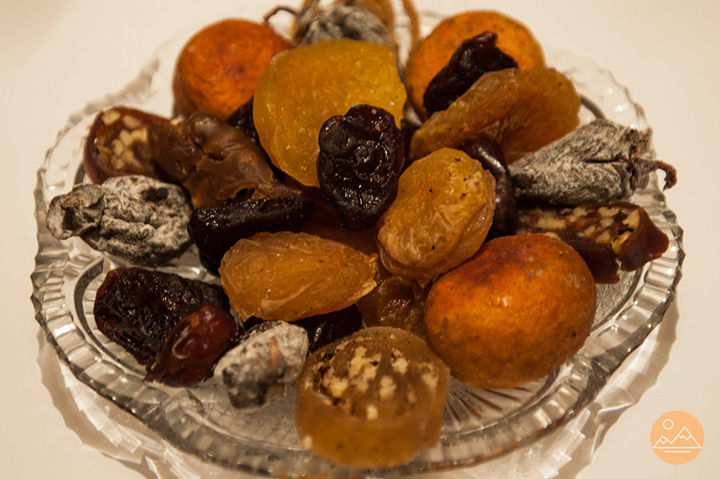
Variety of dried fruits / Photo: Nane Khachatryan
The grain symbolized the continuity of life, as they were seeds, which gave birth to life. Wheat bread or lavash (traditional Armenian flat bread) baked without yeast have always been the main element in Armenian menu. Bread had nearly a sacred meaning, mentioning the abundance within the family: for this reason, it is not allowed to cut bread with a knife, as you can harm the profusion of the house. Bread without yeast was prepared on holidays and had a ritual purpose. On New Year’s, Armenian women used to make the “year bread” (tarehats or gata/darin). Tarehats symbolized success, fertility and health. By tradition, a coin or a walnut was put inside that bread and whoever got it out of their portion was going to have the best fortune in the upcoming year. This tradition is still maintained in some Armenian families.
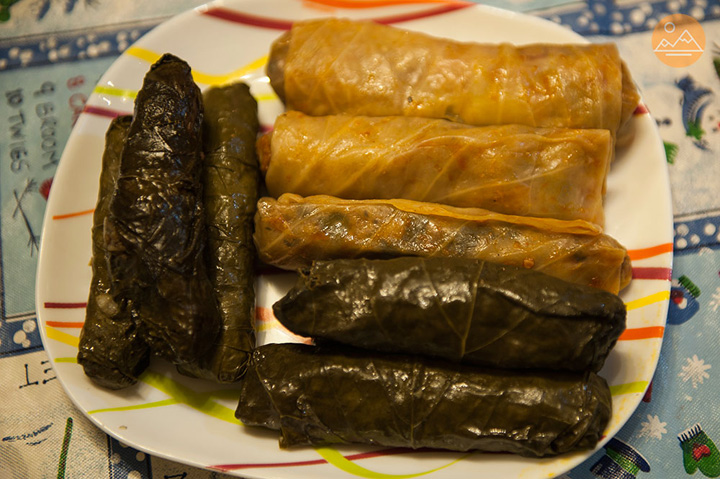
Traditional Armenian Lenten (pasuts) dolma / Photo: Nane Khachatryan
One of the most popular dishes for New Year in Armenia is dolma - grinned meat wrapped in a grape leaf. As New Year was traditionally a fasting period, Armenians used to prepare Lenten dolma (pasuts dolma) - red beans, chickpeas, lentils, raisins and dried fruits wrapped in a cabbage leaf. A whole pack of proteins that makes you full after eating only one. In traditional families, people used to put up to seven different grains inside Lenten dolma, again to bring prosperity and abundance to their family. Nowadays, pasuts dolma is as well made with rice and raisins inside the vine leaf, but until 15th century groats were mostly used instead of rice. This type of dolma was served cold.
Red kidney beans with onions and fried sorrel salads were served next to the main meals. For the soup, some regions used to have kjekhash (made from several grains inside a clay pot, prepared in clay tandoor oven and served with fried onions).
Another national dish that was served at the New Year table was ghapama – a whole pumpkin stuffed with rice pilaf, raisins, nuts and dried fruits. Ghapama was especially prepared in families where they had new married couples.

Ghapama - traditional Armenian pumpkin dish / Photo: Nane Khachatryan
Sweets had their special place on the table as well. The oldest member of the family ate a spoon of honey and congratulated others with words “Live sweet”. Pastry and a special pudding called anoush abour (sweet soup, that is made with wheat and walnuts) were also enriching the palette. Anoush abour was the sweet that people used to take as a gift to their relatives during the holiday. Fresh fruits such as apple, quince, pear and pomegranate were accompanying the sweets. On a copper tray the mixture of raisins, hazelnuts, dates, fig, walnut and almond was displayed.
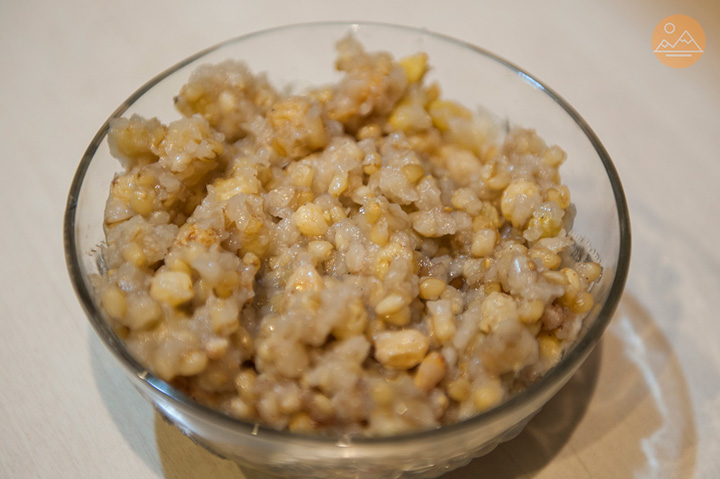
Anoush abour - Armenian New Year dessert / Photo: Nane Khachatryan
Nowadays it’s very difficult to see all these dishes on one table in modern Armenian houses. Instead, Armenians load their tables with a pork leg roast, meat pancakes, turkey, meat snacks, different kind of new salads such as olivier (also known as stolichny), vinegret, beet salad, chicken salad, ishli kufta (meat wrapped in bulgur), hummus, satsivi (Georgian sauce with walnut and chicken), red bean paste, etc..

Pork leg roast / Photo: Nane Khachatryan
During the Soviet period, people forgot about the religious fasting practice and started having the traditional meat dolma on New Year. Later on, other meat dishes were added to this festive list, too. For sweets, baklava and other homemade pastries are served together with dried fruits and “charaz” – a mix of various nuts.
Throughout centuries, even the time when the main meal is served has changed. Traditionally the New Year dinner was served on the last day of December before sunset. As for now, you can find Armenians waiting hungry for midnight to begin the celebration of the New Year with large amounts of food and drinks which often includes champagne, wine, cognac or vodka. The celebration lasts all night long.

Charaz - a mix of nuts and raisins / Photo: Nane Khachatryan
Many of these changes come from the Soviet era. Armenians adopted the cuisines traditions of different Soviet countries, learned international dishes with Russian interpretations, welcomed Georgian inventions and combined them with their national tastes. In 1920’s and especially after 1945, when many diaspora Armenians repatriated to the Soviet Republic of Armenia, locals also got acquainted with Mediterranean cuisine, from which hummus and baklava are present on New Year table.
If you happen to be in Armenia during the New Year and Christmas holidays, then prepare yourself to eat for twelve hours a day. Women cook these dishes with great love and may get offended if you refuse to taste their gastronomical masterpieces. Armenians welcome the New Year with rich tables as they believe, that “the way you welcome the year, the same way you’ll live it”.

